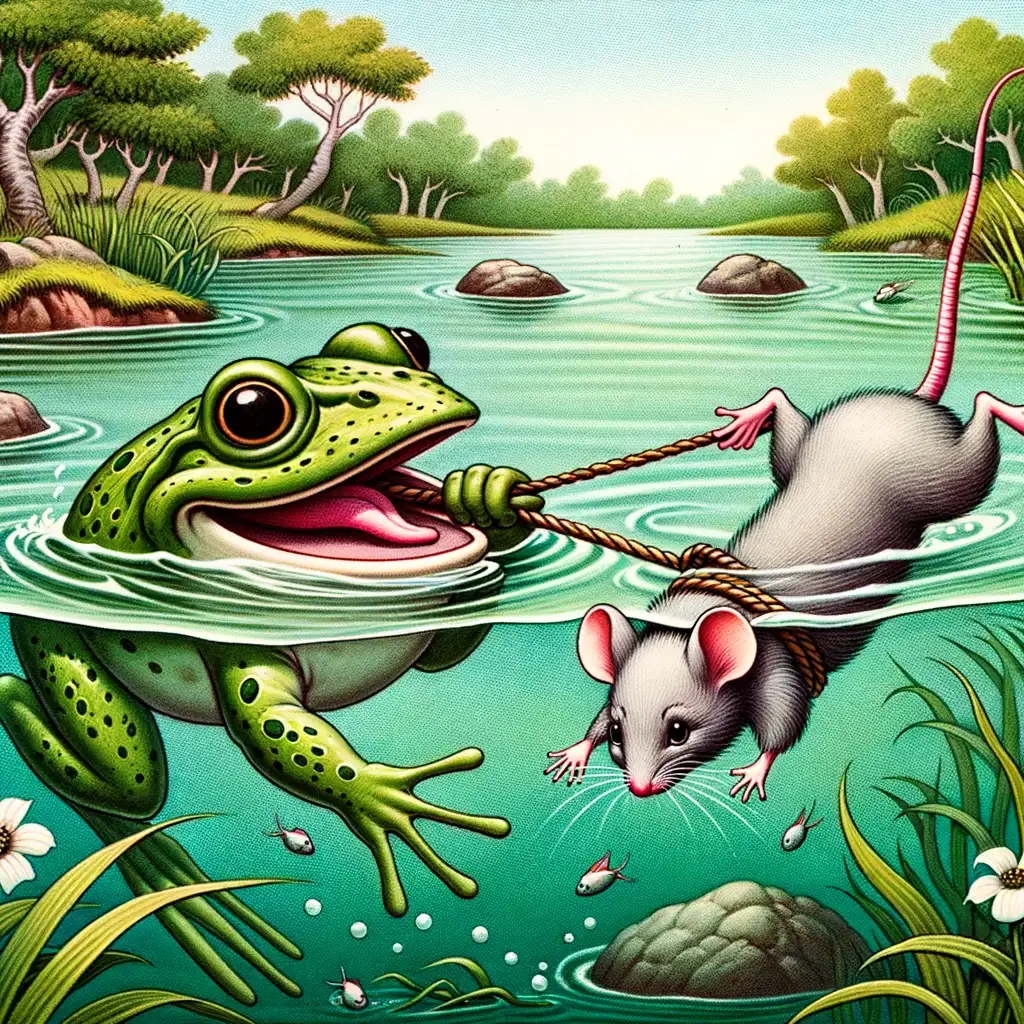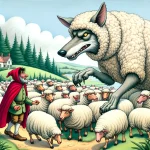
The Frog and the Mouse – Aesop’s Fables
Aesop’s Fables, a collection of instructive stories with moral teachings, have captivated audiences for centuries. These stories often feature animals and inanimate objects with human characteristics, and through their actions and interactions, impart some profound wisdom. One such tale from this treasure trove is the story of the Frog and the Mouse, a timeless narrative that mirrors various aspects of human behaviour and relationships.
Unveiling the Tale: The Frog and The Mouse in Aesop’s Fables
The story of the Frog and the Mouse is a simple yet poignant one. It begins with a mouse and a frog who strike up an unlikely friendship. The frog, cunning and deceitful, takes advantage of the innocent and trusting mouse. He ties the mouse’s foot to his own with a piece of thread, ostensibly to ensure they never part ways. However, the frog’s malicious intentions soon become evident when he deliberately jumps into a pond, dragging the helpless mouse along with him.
The mouse, unable to swim, struggles desperately, but to no avail. Just as it seems the mouse’s fate is sealed, a hawk swoops down, grabbing the mouse and consequently, the frog, due to the binding tie. The fable concludes with both the frog and the mouse being carried away by the hawk, their fates sealed by the very bond that was meant to ensure their companionship. It’s a tragic end that highlights the repercussions of deceit and manipulation.
Lessons from the Lily Pond: Deconstructing Aesop’s Frog and Mouse Fable
Aesop’s fables are known for their moral teachings, and the tale of The Frog and the Mouse is no exception. At its core, it illustrates the consequences of deceit, power imbalance, and the misuse of trust. The frog, driven by his selfish desires, manipulates the trust of the mouse, leading to their shared downfall. This reflects the profound truth that acts of deceit and manipulation often lead to self-destruction.
Furthermore, this fable spotlights the dire consequences that can result from power imbalances in relationships. The frog, being a stronger swimmer, usurps control over the mouse, taking advantage of his inability to swim. This power dynamic represents the inherent vulnerabilities and dangers that can arise within unequal relationships. Finally, the narrative underscores the importance of discerning true intentions. The mouse, in his naiveté, fails to see through the frog’s deceit, thus falling prey to the frog’s plans. It is this trust, misplaced in the hands of a deceitful friend, that ultimately leads to his demise.
The story of the Frog and the Mouse, like all of Aesop’s fables, weaves together a narrative that is both simple and profound. It serves as a mirror, reflecting back to us the ugly realities of deception, power imbalances, and misplaced trust. Yet, it also provides us with timeless wisdom, nudging us to be discerning, to question and to maintain vigilance in our relationships. The Frog and the Mouse, thus, remains a relevant and timeless tale, continuing to resonate with readers across the ages and serving as a potent reminder of how our actions and relationships can shape our destiny.


